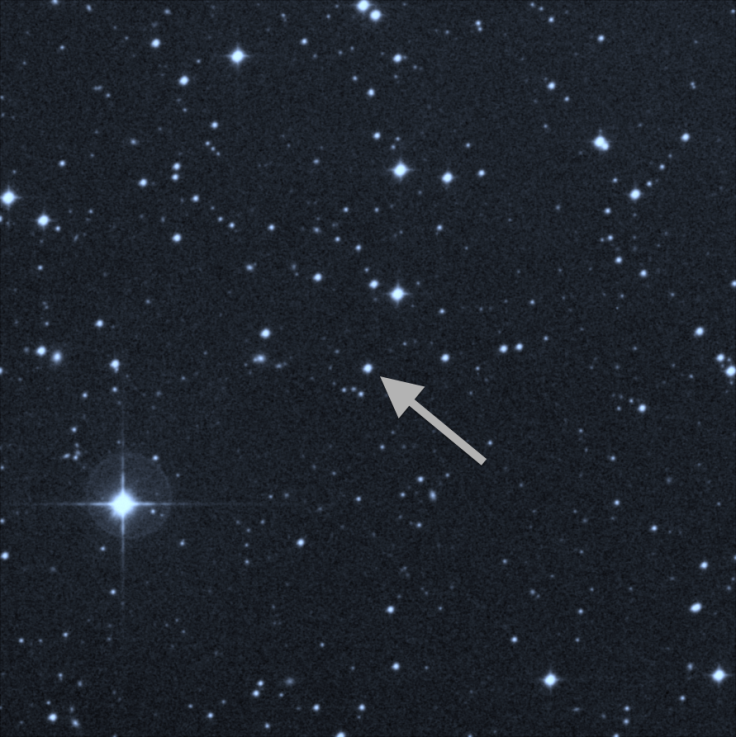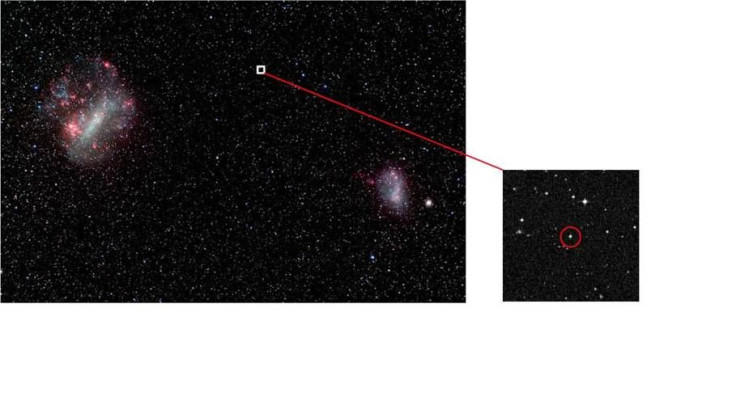Oldest Star Ever Discovered: Astronomers Observe A Star That Is 13.7 Billion Years Old
Update 7:30 p.m.: Photos of SMSS J031300.36-670839.3, courtesy of Stefan Keller and ANU, can be viewed below.
Astronomers have discovered a star that is 13.7 billion years old, making it the oldest star ever observed. The star formed just after the Big Bang and contains less iron than predicted by previous research.

The research was led by Stefan Keller and David Paterson, from the Australian National University, using the SkyMapper telescope at the Siding Spring Observatory. The star, SMSS J031300.36-670839.3, is located 6,000 light-years from Earth, and the discovery should provide new insight into the early universe and ancient stars that formed just after the Big Bang, called "first stars" by Keller and Paterson.
According to Keller, the discovery is the first step in understanding ancient stars that formed after the Big Bang. Astronomers can measure the star's composition as well as iron "pollution" due to supernovae. Keller said in a statement, "This is one of the first steps in understanding what those first stars were like. What this star has enabled us to do is record the fingerprint of those first stars."
As explained by the Massachusetts Institute of Technology, the Big Bang produced hydrogen and helium particles that became stars. These massive stars did not live long and their deaths, in supernovae, produced new elements, namely iron, carbon and oxygen. Previous research indicated the supernovae were enormous explosions that produced a lot of iron, but the star discovered by the Australian astronomers did not contain a lot of iron.
"This indicates the primordial star’s supernova explosion was of surprisingly low energy. Although sufficient to disintegrate the primordial star, almost all of the heavy elements such as iron were consumed by a black hole that formed at the heart of the explosion," said Keller.

Astronomers can determine the age of a star based on iron levels. Each subsequent supernova produces more iron and younger stars contain higher levels of the element than ancient stars. Keller said the sun, approximately 4.6 billion years old, requires an iron level equivalent to 1,000 times the mass of the Earth whereas the newly discovered ancient star requires "an Australia-sized asteroid of iron and lots of carbon."
The team used the Skymapper telescope to find stars that had a very low chemical signature, indicating they could be a second-generation star formed from the supernova of a primordial, or first, star. Finding a few candidate stars, the researchers used the Magellan Telescopes, located in Chile, to determine the absorption line, or wavelength of light given off by different chemicals, of these stars. SMSS J031300.36-670839.3 contains 10 million times less iron than the sun, and the researchers could not actually detect any iron, just a hypothetical upper limit, notes MIT.
Based on the observations, the star has a higher carbon level than theorized. The lower-than-expected iron level leads to a new understanding of the ancient universe and how the first galaxies and stars were formed.
Co-author Anna Frebel, from MIT’s Kavli Institute for Astrophysics and Space Research, said, “This star had a lower-than-expected explosion energy, and also lower than today’s regular supernovae, which was really an unexpected finding. That tells us that, to some extent, we have to go back to the drawing board, because there is more variety amongst this very first generation of stars than we have assumed so far."
The supernova that was responsible for the newly discovered star may have been too weak to eject iron from its core. Frebel said a lower-energy supernova could have been beneficial to the formation of early galaxies as a high-energy explosion could have destroyed a new galaxy. The research was published in the journal Nature.
The age of SMSS J031300.36-670839.3 would mean it's the oldest star ever observed, besting the current record-holder, HD 140283. Most recently, researchers determined HD 140283, known as the Methuselah star, was 14.5 billion years old, based on new Hubble observations. That would make the star older than the universe itself, although there is a plus or minus threshold of 800 million years, which would mean HD 140283 would be 13.7 billion years old, and further analysis has the star's age around 13.2 billion years.
© Copyright IBTimes 2025. All rights reserved.






















